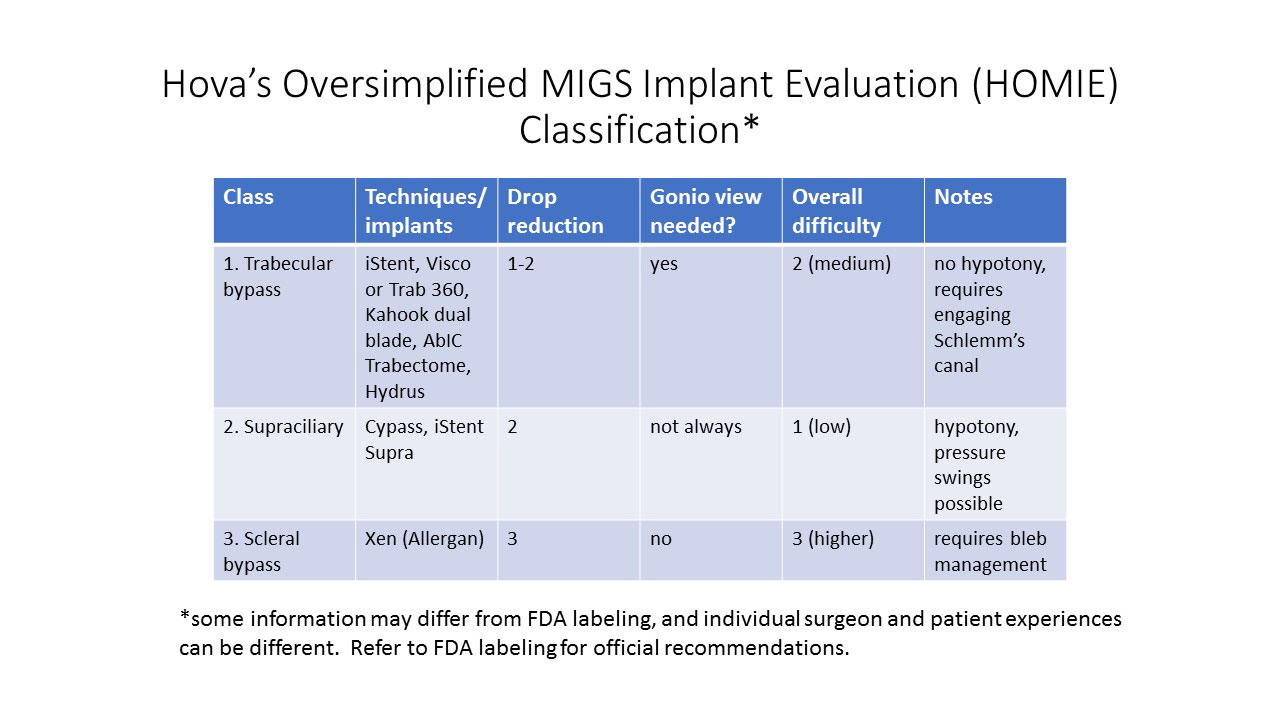BLOG: MIGS simplified
Click Here to Manage Email Alerts
There’s no question that MIGS has become a worthwhile add-on to cataract surgery. The well-deserved amount of attention in journals and at meetings to these new procedures is impressive. Still, it’s surprising that only about 16% of U.S. surgeons are using these devices and techniques, per several industry sources.
Every cataract surgeon should get involved with these techniques and devices. As many as 25% of cataract patients can benefit from MIGS because of coexisting glaucoma or ocular hypertension. The procedures are intuitive and do not dramatically lengthen the time of surgery. They are FDA-approved and reimbursed fairly. To not do MIGS, subjecting patients to a lifetime of taking drops, is just missing a great opportunity.
To demystify the growing range of MIGS techniques, I offer my immodestly self-named “Hova’s Oversimplified MIGS Implant Evaluation” (HOMIE) guide, honoring my roots in Detroit and based upon my own experience implanting and researching these devices.

1. Trabecular bypass procedures reduce medication need by at least one drop. Naturally, individual patients and techniques can vary significantly. Trabecular bypass devices include the iStent (Glaukos), Visco or Trab 360 (Sight Sciences), ab interno canaloplasty (Ellex), trabeculotomy with the Kahook Dual Blade (New World Medical), the Trabectome (NeoMedix) and the upcoming Hydrus (Ivantis). All of these techniques require gonioscopic visualization, and all in some manner open or facilitate flow through the trabecular meshwork. They avoid the risk of hypotony, and all have a proven track record.
2. Supraciliary procedures. Either CyPass (Alcon) or yet-to-be-approved iStent Supra (Glaukos) allows fluid drainage from the anterior chamber into the supraciliary (that’s the new word for suprachoroidal) space. While these procedures carry a higher risk of hypotony, they can actually be performed without gonioscopic visualization, which may be a plus for some surgeons who find gonio lenses to be awkward. The postop course can be a bit more rocky in these patients with these procedures with pressure highs and lows. While the pressure lowering may be greater, so may be the stomach acid generated.
3. Transscleral procedures may reduce by three or more medications. The Allergan Xen stent is designed to carry fluid from the anterior chamber to the subconjunctival space, creating a low bleb. While this procedure does require a gonio lens and bleb management, it’s the closest thing to a traditional trabeculectomy. Hypotony is rare because of the controlled fluid capacitance of the stent, but of course there is the risk of failure related to conjunctival scarring.
As the name implies, this classification system is oversimplified, and each patient’s and surgeon’s experience can vary.
I will certainly expand the variety of tools I use, and I hope every surgeon will do the same.
Disclosure: Hovanesian reports he is a consultant for Alcon, Glaukos, Ivantis and Sight Sciences.
